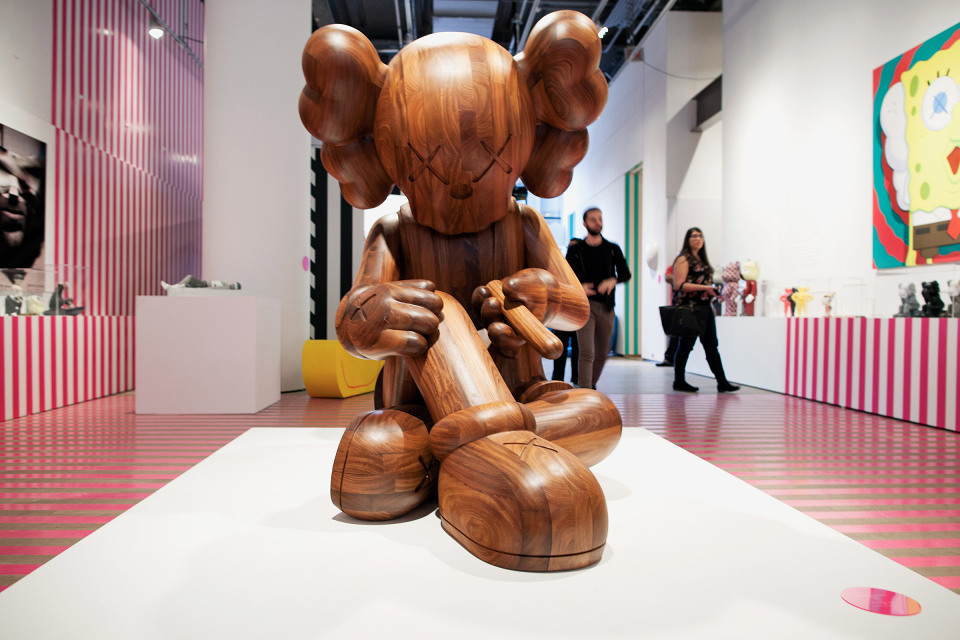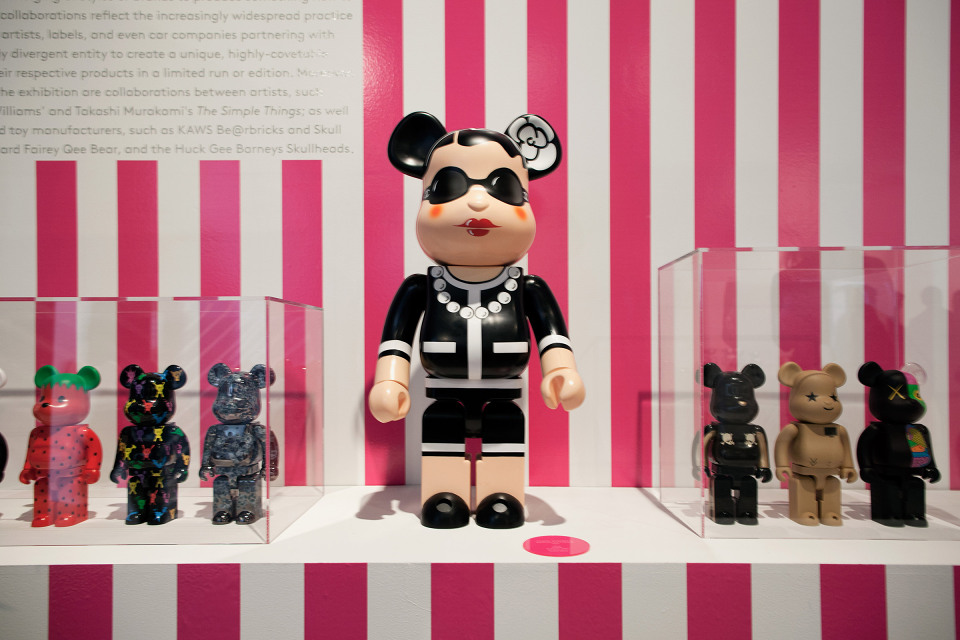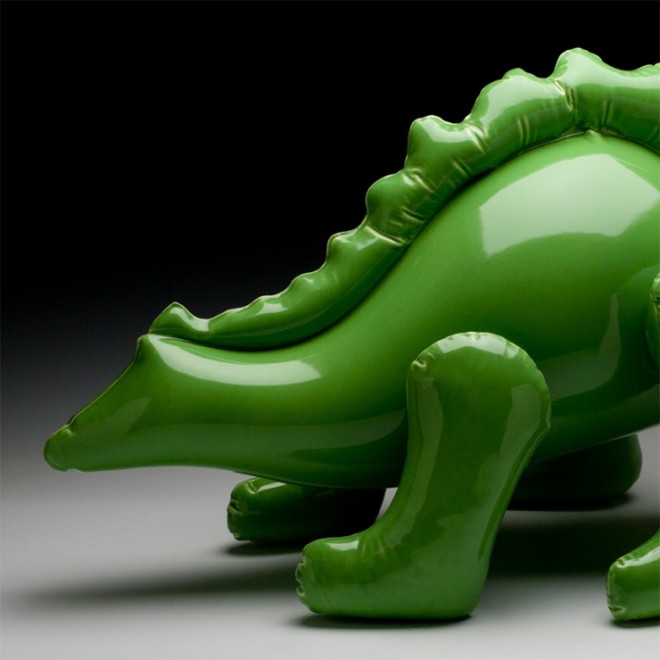Category Archives: PHOTOGRAPHY
Conference of Cool.
THUNDERCLOUD
Indie filmmaker, Talon Clemow, on his attempt to do justice to the greatest day of surfing in living memory
From 2010 through to the unforgettable events of the Volcom Fiji Pro in 2012, Cloudbreak – the reef off the island of Tavarua – witnessed a series of harrowing surfing performances that shook the sport to its core. Even more remarkable was that the men behind it all were in fact not the lauded million-dollar-a-year World Tour surfers, but part-time professionals happy to risk their lives for nothing more than the pure thrill of splitting a 20-foot tube. Thundercloud is an exceptional feature documentary by Gold Coast-based filmmaker, Talon Clemow, exploring all this and more.
At what point during that famous day in 2012 did you realise you were watching history unfold?
TC: When I saw (Ian) Walshy’s wave. That was the point when I was like, oh my god, this is next level. He took off, came off the bottom and as I zoomed in I could see this thing just rifling down the line and he pulled into it and just got really, really deep. I thought he was gone and then it spat and he just came flying through the spit. It was incredible, one of the deepest barrels I’d seen. I just went, woah! Up until then it had been (Dave) Scardy’s barrel in 2010 and Hippo in 2011 that were the benchmarks but that had definitely surpassed it.
You’ve put together an incredible feature film that takes place over not only on the events of the super swell of 2012 but also the similarly significant swells of 2010 and 2011. Was it obvious to you at the time that surfing was changing before your very eyes?
In 2010 when the decree changed (prior to that only guests of the Tavarua resort were allowed to surf Cloudbreak) it was in July and a big swell popped up in September and we went because it was the first time we could go. We had a good crew of Laurie Towner, (David) Scardy, Dean Brady and Shaun Cansdell but as soon as we arrived we realised all the guys were under gunned. They paddled out with the expectation of surfing without a ski and catching waves under their own power. Some guys were towing that morning. I think (Ian) Walshy got a mad one but when I saw Laurie try to paddle in to that big one that he didn’t make the drop on, on his 6’8, that to me was a changing point for Cloudbreak. Up until that point waves like that had been towed into out there.
The way the surfing is captured in Thundercloud; the sheer size of the waves; the way they thunder so symmetrically down the reef; and the way surfers so smoothly scoop up and into the waves of their lives – it all just seems so meant to be.
One hundred percent. That reef is 100% the best reef on the planet. It’s amazing. It’s incredible what it can handle. I don’t think there is another wave in the world that can break from two-feet to 20-plus and still maintain its shape and size. The shape of the reef and the different ledges it breaks on as it gets bigger, just the whole set up out there it’s meant to be, you’re right. It’s a wonder of the earth and a wonder of god’s creation.
There was some controversy on the day though and your film doesn’t shy away from it.
Nah, well it’s all part of the story. That day was special for so many reasons. I think what transpired on that day was meant to be in order to allow for all the action that took place. The decisions that were made I think gave us a little bit of everything; freesurfing in the morning, then the event went on hold, then they ran it when the wind dropped and the wind picked up again and it was terrible when they called it off. When it was on hold all the big wave guys charged out there but the waves weren’t good at the start, then they got better. There was controversy but a lot of it came from commentary from people that weren’t there. I think the guys who were there made the right decision. Saying that, now they’re prepared for it. They (World Tour surfers) know to take an 8’0 to Cloudbreak. If it happens again there is no way they won’t surf it.
The way you cover the controversy in the film definitely reflects on some people better than others. Some of these guys are surfers you’ve worked with very closely over a long time. Were you concerned with how the film might affect your relationship with them?
Yeah, for sure. But my job as a documentary maker is to document the facts and I brought both sides to the table. I haven’t just made a biased opinion of it. As a documentary maker you have to bring two sides to the story. You know, I spoke to Bede this morning and said to him it would be great for him to come and have a look at the production. I wanna know what he thinks of it and I had the guy from the ASP, Matt Wilson (the contest director at the Volcom Pro in 2012) come to the office and look at his stuff. He was concerned after he saw the trailers that it was gonna be a stitch up. I said, look it’s not, I’m just reporting on the facts and I want your story. He gave me the all clear. I haven’t cleared it with the surfers but the parts with Bede and Taj, they’re in the firing line because they were in the next heat and they weren’t ready and weren’t prepared to surf but at the same time I think all the stories they told me were just their version of events and I’m bringing that to the forefront. I hope they don’t think I’ve stitched them up because I don’t feel like I have. I’m just letting them tell their story.
The guys who stole the show that day were largely part-timers – Kohl Christensen installs solar panels back in Hawaii for a day job, Dave Wassel is a lifeguard on the North Shore, Kala Alexander works at a chemistry lab. Yet they risked their lives for the pure challenge of getting one of these waves. How important was it to tell their story?
Well, first and foremost I don’t think any of those guys are part-timers. They’ve grown up surfing and around the ocean and have committed their life to big wave surfing. They might not be on the same sponsorship deals as some other guys but they are totally committed to big wave surfing and surfing in general so they live to surf. But apart from that their stories are 100 percent relevant because they participated and they were pushing the limits along with everyone else that was there. Their contributions will be remembered and revered and hopefully encapsulated in Thundercloud.
Can you describe what kind of characters the likes of Kohl, Kala, Wassel and Healey are?
All four are pretty individual. Trying to group them together is pretty hard. I know Healey the best out of all those guys. I’ve stayed at his house over the last few years in Hawaii. It’s kind of hard to say: Healey is a maniac but a very calculated maniac. He puts himself in positions because he wants those kinds of waves and you’ve gotta be a bit of a maniac to want a 20 foot wave that’s pitching up like those things are but at the same time he thinks and plans everything out because that’s what he wants.
Your favourite part of the film?
Surfing-wise it’s hard. There are so many high points in that movie. I think the story about that big set is the culmination of the whole movie – the set where (Mark) Healey had his board in the lip. There are so many stories just about that wave itself – Kohl was trying to catch it, Healey was too deep but tried to look back and work out where he was at so he could catch the next wave like that, Makua and Joel were on the ski talking about going to tow one of them and then that thing came in, there’s the story of the photographer who shot it and won the Nikon photo of the year award. I don’t think a wave like that has been seen anywhere on the planet but the way global warming is going and the fact all the storms are getting bigger and gnarlier, we’re gonna see bigger and better.
In order to bring this film to a public audience, I understand you made some pretty big sacrifices?
Yeah, I’ve done everything 100 percent independently. It’s been a big task – a big task. Taking it on individually wasn’t that hard of a decision but I think the experience of going through it financially and funding it has been tricky. I basically had to cash in a life insurance policy that I had because I needed money and I didn’t have any. It’s been hard. I’ve got a little boy that’s 18 months old, a wife, a mortgage all sorts of stuff. But yeah, seeing it all on the big screen and people enjoying it will be worth it.
By Jed Smith
Thundercloud World Premiere – Thursday February 13, Hayden Orpheum, Sydney
Minimilist Versions of Popular Packaged Items
Some really nice work by Antrepo that showcases how minimalist packaging could look in an industry that is obsessed with MORE, MORE, MORE. If only the grocery store aisle looked a bit like this…
Winter Groundswell.
Furniture Inspired by Japanese Shipbuilding Techniques by Jin Kuramoto
Unless otherwise noted, all photos by Takumi Ota
“Like huge Japanese lanterns, the harbors along Japan’s jagged coast sparkled at night last week with the blue fire of acetylene welding rods and the white glare of arc lights. The lights burned overtime as Japan worked to meet the greatest shipbuilding boom in its history. All 54 ways at Japan’s nine major shipyards are occupied; one ship is barely launched before a new keel is laid,” reported TIME Magazine in 1964.
Indeed, Japan used shipbuilding in the 1950s and 1960s to rebuild its industrial structure and the country dominated in the late 1980s, filling more than half of all orders worldwide. Japan has since lost its competitive edge to countries like South Korea but now, a group of artisans and designers are looking to revive shipbuilding but in an entirely different way – through furniture.
“The heritage of many of the woodworking techniques used by Japanese carpenters originates from Japanese shipwrights,” said Jin Kuramoto (previously), who recently teamed up with a group of Hiroshima-based woodworkers to create a new furniture brand, MATSUSO T.
The brand is debuting with 2 lineups; the first, designed by Kuramoto himself, is called Nadia. The collection features curved sections of wood for the back of the chair – an image reminiscent of the hull of a ship. Look underneath the chairs and tables and you’ll see frames of interlocked struts, a technique used by the old shipbuilders. In fact, Hiroshima is home to Tsuneishi, one of Japan’s larger shipbuilders. In a wonderfulphoto essay the Tokyo-based photographer Androniki Christodoulou documented the shipyard.
The second lineup for MATSUSO T is a series of pentagaonl furniture called Five, designed by Swedish designer Claesson Koivisto. The entire series will be on display atStockholm Furniture Fair.
Japans Volcanic Crater Island Aogashima
 unless otherwise noted all photos by flickr user mh2718
unless otherwise noted all photos by flickr user mh2718
Aogashima – the blue island
Despite being 222 miles south of Tokyo, Aogashima, a remote yet inhabited island, falls under the administration of Japan’s capital city. But the address is where the similarities end. As of 2010, the 9 square kilometer (about 1680 football stadiums, for all you Super Bowl fans out there) island has 98 households and a population of 165, making it the smallest village in all of Japan.
Looking almost like a Jurassic Park-like natural fortress, the volcanic island is known as a caldera. Within the large crater is a smaller crater – a cinder cone – that was formed after the larger explosion. The steep rugged cliffs of layered volcanic deposits rise up as high as 1388 feet.
Origins Shrouded in Mystery
How people first ended up on the island is largely considered a mystery. The island’s own legend has it that the island was once forbidden to women because it was believed that man and women living together on the island would anger the gods. The first written records of the island appear around the 15th century and many of them are of shipwrecks so there’s a strong possibility that sailors may have taken refuge on the island and eventually made it their home.
Returning Home After Tragedy
A series of earthquakes in 1780-81 was followed by volcanic activity 2 years later. Lava flows burned down all the houses and residents were forced to flee to the nearest island, Hachijojima. Unfortunately, about half of the 327 residents did not make it out in time and perished. Those who did survive were forced to live out the next 40 years of their life on Hachijojima. Some sought out new life elsewhere but others could never forget their beloved island. One of these people was Jirodayu Sasaki, who, after 18 years of planning, courageously led an expedition back to the island and successfully resettled in 1835. He’s considered a hero on the island and there’s even a statue of him.
Traveling to Aogashima
In this day and age, getting to Aogashima is actually much easier than you might have thought. They even have their own heliport!
- First Class – fly from Tokyo to Hachijojima and then take a helicopter. A one way trip will take just a little over 2 hours and will cost about $240.
- Economy Class – sail from Tokyo to Hachijojima and then take a smaller boat. A one way trip will take 14 hours and will cost about $100.
Entertainment
So what do you actually do once you get to this lost paradise? Well what it doesn’t have in beaches the island makes up in starry skies. Photographer Toshihiko Ogawadocumented some of these fantastic starry nights. The photos were taken from the 2nd caldera, where many people will go to camp out. There is also a volcanic natural hot spring where you rest those muscles from all the rock climbing you did getting there.
Otherwise there’s plenty of fishing, hiking trails and shrines to see. And the internet is probably shoddy so it’s the perfect place to unplug.
This Is Not A Toy Exhibition Curated by Pharrell Williams
Pharrell‘s latest stint in the art world is as Guest Curator for “This Is Not A Toy” alongside Curator John Wee Tom and DX Associate Curator Sara Nickleson. The visually-striking exhibition showcases contemporary sculptures, figurines and artworks at Toronto’s Design Museum, Design Exchange. As the museum’s president explains,
Pharrell’s involvement is really due to the fact that he’s so passionate about the genre and explains that urban vinyl and collectible design is what brought him into the world of contemporary art.
Featuring works by Takashi Murakami, KAWS, Coarse, Huck Gee, FriendsWithYou and others, the exhibition approaches toys as a reflection of contemporary culture and contemporary design. The exhibition is now open and is on view until May 19.
Design Exchange
234 Bay Street
Toronto, Canada
M5K 1B2
Reigning Champ x Deus Ex Machina Spring 2014 Capsule Collection
Designed by Deus Ex Machina and produced by the Canadian fleece experts from Reigning Champ, the two present a new capsule offering for Spring 2014. Sticking to the silhouettes that they have previously introduced in heather grey, the heavyweight fleece riders jacket and full-zip hoodie with stow-away balaclava return in black with matte black metal hardware this season. The two pieces are now available from select retailers and directly from Reigning Champ.
Photographer captures erupting Volcano in the middle of a lightning storm
These photos by Francisco Negroni of a volcano exploding in in central Chile look like the backdrop to a fantasy film.
Entertain more.
Ceramic Sculptures just like Inflatable Toys
Super cool sculptures from Brett Kern that look exactly like high-design inflatable toys but are actually made completely of ceramic. Head over to his Etsy shop and hit “add to cart.”
Incredible movie magic video showing off the VFX you didn’t even notice in THE WOLF OF WALL STREET
Here’s an awesome video that shows off some of the more challenging shots that were put together by a VFX team in Martin Scorsese’s new film The Wolf of Wall Street. It’s always crazy to see a film you’d think would be all practical use so much movie magic to make the final product happen.
The Hypebeast Hundred
Check out the complete list of Hypebeast’s Hundred HERE
Whether by effort, skill or often both, 2013 offered up many names deserving of accolades; newcomers and veterans, varying in practice from music, art, and fashion to technology and media. Aiming to sensibly account for all achievements worth noting in 2013 is a lofty task, and while there are many deserving of commendation, this list pays respects to those that made the biggest leaps.
The big picture seems to revolve around the continual growth of a global culture through which news and trends can instantaneously spread. It is no longer surprising when something goes viral, rather it is expected. The digital age persists in creating and killing celebrities, seemingly offering a new name each day. In 2013, the overlap carried on; and never has there been a more eclectic mix involving street culture, with high fashion, sportswear and hip-hop all playing their parts. Street goths, bucket hats and floral prints arrived in full force, activewear and function became more prominent, rappers co-mingled with streetwear influencers, and multinational corporations patiently took notes. Meanwhile, we bore witness to Miley’s twerk seen around the world, Kanye unleashed the brilliance of Yeezus and a following barrage on radio programs, and it was our mission to keep you updated along the way. We present to you our inaugural listing of The HYPEBEAST Hundred.
Nendo Reinvents the Chopstick by turning two into one
Your chopsticks can make your food taste better, claims Hashikura Matsukan, a chopstick manufacturer steeped in 400 years of history. But how can you improve on, or reinvent, something that’s been around for so long? Something that’s been refined so many times? It’s just 2 sticks that taper to a point, right? Well that’s exactly where Oki Sato from Nendo turned to, when he was asked to redesign a series of chopsticks.
“Chopsticks ordinarily come in pairs,” explains Sato, “but the rassen chopsticks are a single unit. They’re separated into two for eating, then rejoined into one form when not in use.” Rassen means helix, and refers to the DNA-like shape used to link the two together.
Another design in the series is kamiai, or interlock. “We put a gap on one of the four sides of the square shaped chopstick, and embedded a magnet, so that the two would snap together in one piece when they are flipped and fitted to each other.
We placed the magnets towards the outside of each chopstick, so that the chopsticks don’t come together accidentally while someone is using them to eat.”



























































































